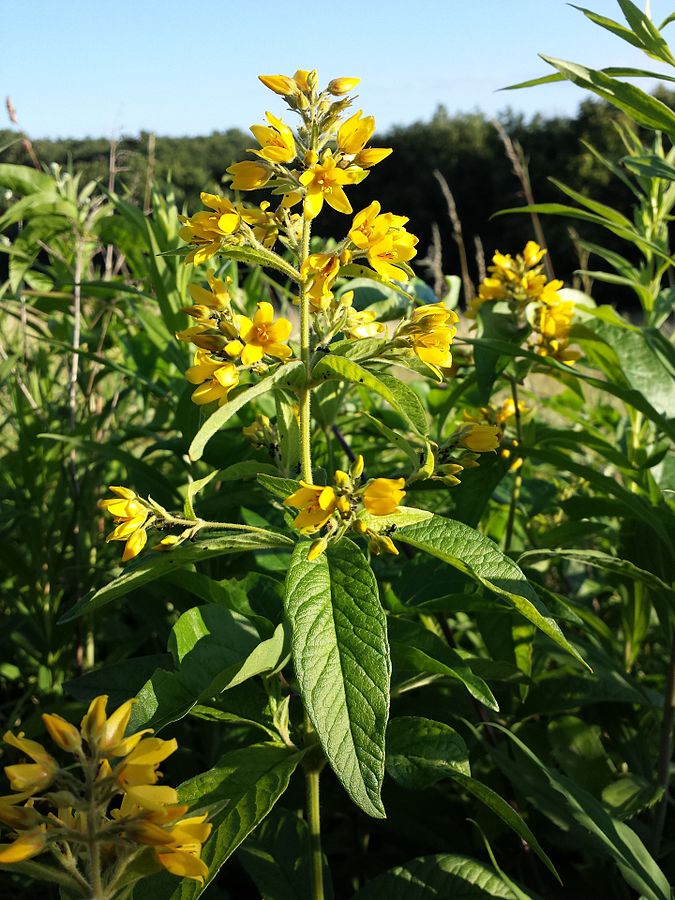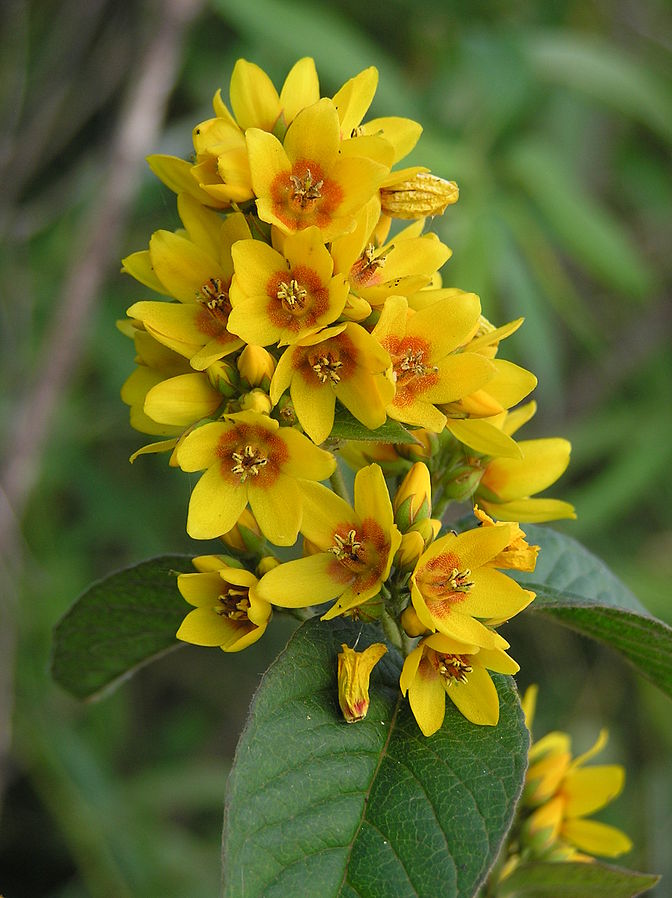Garden Loosestrife

Garden Loosestrife
(Lysimachia vulgaris)
Priority: - Prevent / EDRR
Tags: Aquatic
Identification and Reproduction
Identification:
- Garden loosestrife is a cousin to yellow loosestrife, again is not in the true loosestrife family but actually a member of the primrose (Primulaceae) family.
- The stems and leaves are covered in soft hairs.
- Stems grow up right and can have a branching pattern. Stems can reach up to one metre tall.
- Produces lance shaped leaves that are dotted with black or orange glands. Leaves may be whorled or oppositely arranged.
- Flowers are erect panicles that grow on the end of stems and branches. Flowers are composed of 5 petals and have a orange or reddish-brown centre. Flowers are encased by green sepals that hae a distinct orange-brown edge.
Reproduction:
- Can spread through seeds and rhizomes.
- Rhizomes can spread up to 4.5 m.
Habitat & Ecology
- Capable of growing in full shade but is also shade tolerant.
- Invades wetlands, fens, lakeshores and riverbanks.
Impacts
Ecological:
- As it forms monocultures along riparian areas it will threaten native species and the sensitive ecosystem.
- It is very aggresive and will out-compete native species and even other invasive species like purple loosestrife.
- Since it displaces native vegetation it also alters waterfowl, bird and fish habitat.
- Dense monocultures create mat-like root systems near waterways and become very difficult to remove.
- Will increase sedimentation and slow the flow of waterways.
Management
Prevention is a high priority for this plant.
- Refrain from purposely growing garden loosestrife as it can easily escape gardens.
- If you choose to keep it growing on your property be sure to monitor and maintain plants so they do not expand into neighbouring waterways or wetlands.
- If traveling through infested waterways be sure to clean, drain, and dry watercrafts before moving off site.
Mechanical/Manual Control:
- Hand pulling or digging will only be successful on small infestations or newly established plants. Entire root systems should be removed and this may be too labour intensive for larger patches.
- Flowering stems can be carefully cut at the base to prevent from further seed dispersal.
- Cutting and mowing in combination with tarping has proven effective. Cover cut infestations with black tarp or landscaping fabric and leave for at least two years.
Resources
Download the King County Noxious Weed Control Program Weed Alert for garden loosestrife here. As this is an American resource, Canadian guidelines and regulations may differ. Be sure to carefully read all labels before use.
View header photo here.




